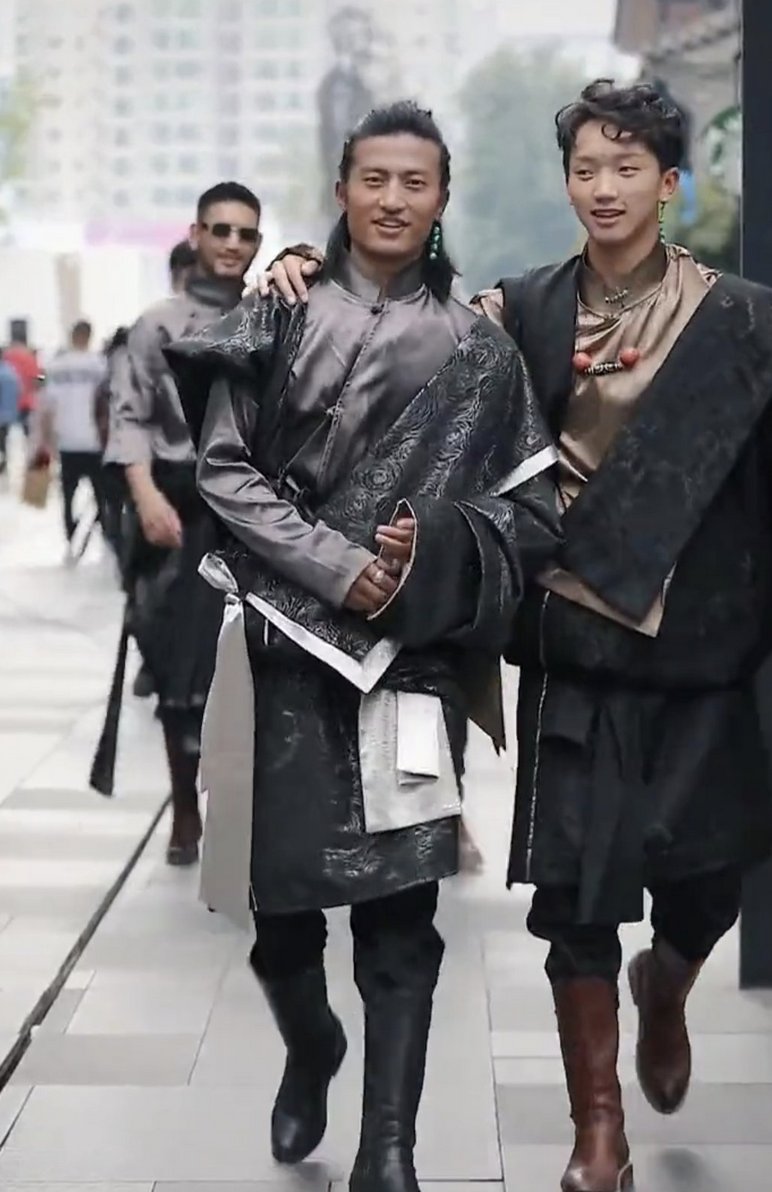The cyclic revival of “Roman Antiquity” and “European Aristocracy” and “the Roaring ’20s” and “the ’70s” and “the ’80s” in Western fashion and mass-media, always curated so as to avoid improper focus on imperial genocide or slavery, resembles nothing so much as the boom-and-bust cycle of the capitalist economic system that produces them.
In this quagmire of imagination, something like modern Tibetan fashion smashes this static prejudice, demonstrating in the present and before our very eyes how traditional cultures fluidly evolve as a society develops, carrying a link to the past forward into the future.
Fashion goes hand-in-hand with economic development for two obvious and intertwined reasons:
- One cannot freely experiment with fashion while overwhelmed by the basic task of supplying all of the population with their minimum needs (because to whatever extent one does experiment, it will be deemed frivolous), and
- one cannot confidently express and explore a self-identity while still under the yoke of propaganda extolling foreign superiority, a superiority reified by the presence of e.g. American military bases in one’s own soil. In other words, the pressure that leads people to internalize a “White Gaze” is enormous, and will negatively distort or sabotage any premature efforts through stifling shame and self-consciousness.
Consequently, as the fetters of imperialism loosen, we can expect rattling and motion.
Among Han Chinese, Guofeng music didnt come into vogue until Chinese people got wealthier. Korean and South Indian film have made spectacular strides. Similar stirrings can be found everywhere in Asia and in Latin America and in Africa and in the Middle-East. Indigenous culture is breaking free from the status of “being an artifact” — a conceptual protective cage of sorts, to preserve highlights from totalizing colonial siege (often in the far-removed museums of the colonizers themselves, in Britain or Germany) — and into modes of self-expression that feel historic and contemporary simultaneously, keeping pace with the people’s needs and wants.
The eradication of poverty world-wide will produce great cultural revival and diversification, and we cannot yet envision the bounty this will yield. Development under capitalism has meant commodification that optimizes for accumulation. Development under socialism means “consumerism” that optimizes for mass enjoyment. This is bewildering to the Westerner who conflates a correct opposition to the rapacity of capitalism with a rejection of development itself, as the corruption of some reimagined pure pastoral past. In the field of culture this attitude takes the crude form of fetishization, mourning the loss of “authenticity,” and it’s worse than gross: it’s incorrect.
As a media enthusiast, if I get to live several decades more, I hope I get to see the rise of a film scene broken fully free from the budgetary constraints that have historically equated “world film” to B-film or arthouse. Instead of hundreds of noisy and dull recruitment ads for the U.S. military, the biggest releases of the year everywhere in the planet might be high-budget epic portrayals of classic wars of liberation, seen from the perspective of Haiti, Peru, or Vietnam; or, less vengefully, stories of people coming together and overcoming differences to achieve hitherto unimaginable collective goals. [1] Everyone will get the resources and production equipment necessary to do their heroes blockbuster justice; battering Western ideology like a piñata, and grounding every American myth to dust.
